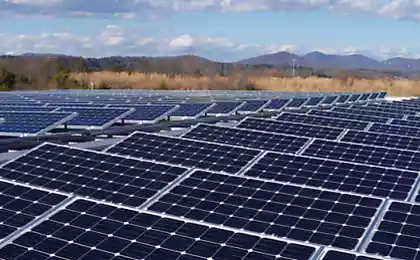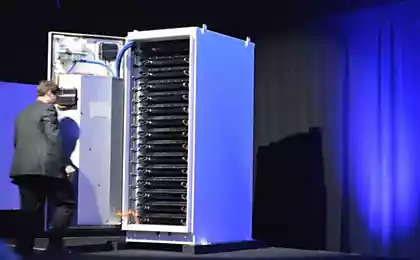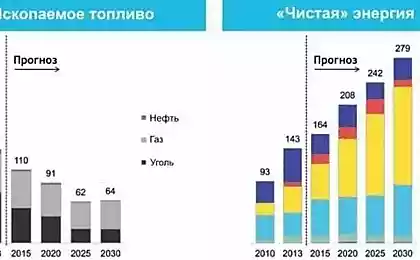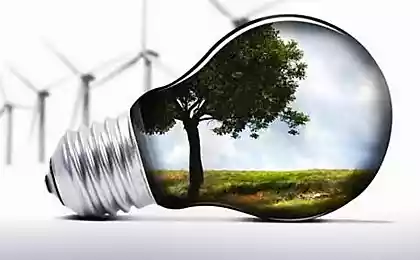457
In Australia abandoned gold mine turned into storage solar energy
The largest Australian gold mine, Kidston, owned by a canadian company, closed in 2001. On its territory there are two crater with a depth of 300 m, located next to each other, which plan to use to create a pumped storage system for energy storage.
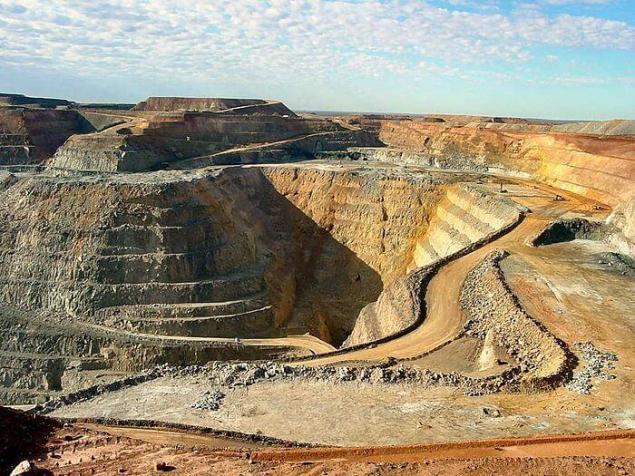
Australian company Genex plans to use the huge craters left after the extraction of gold, to create the world's first hybrid-pumped storage energy storage system with integrated solar power plant. Pumped storage power plant (PSPP) is widely used to store energy on an industrial scale worldwide, with about 99% of this market.
Technology PSP can be used for storage of "intermittent" renewable energy sources (solar, wind), instantly releasing it when the demand occurs in periods of peak demand or in cases of unexpected mains failure. Now the gold mine has already built solar power plant of 50 MW, which is planned to be operational by the end of 2017. Its cost is estimated at $ 100 million.
It is expected that the solar panels will generate 145 thousand MWh per year, enough to provide about 27.5 million average Australian households. The second phase of the project will be the creation of pumped storage power station with capacity of 300 MW. Daily storage system will work on a 7-hour cycle, which will allow it to provide supply to the network 2250 MWh of energy.
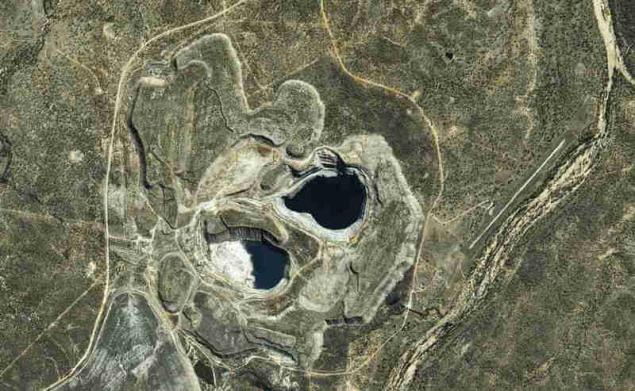
All that is required to create pumped storage systems energy storage is the two tanks at different heights typically from 100 to 1000 meters, and the ability to pump water between them. Height difference (height of water pressure) and the volume of water stored in the upper reservoir, determine the potential energy of the entire system. When demand is low, electricity from the grid is used to pump water into the upper reservoir. When the demand for electricity increases, water is discharged into the lower reservoir. When water flows through the tunnel, or tube, into the lower reservoir, it drives the turbine of an underground power plant that transforms the potential energy into electricity.
Estimated Genex, the height of the water head in their energy storage system will be 190 m, and the volume of the upper reservoir can hold up to 5 million cubic meters of water (comparable to a 2 thousand Olympic swimming pools). In Australia there are three pumped storage plants, but these three systems are associated with the hydropower facilities on the rivers, whereas the new system will be integrated with the solar station. So, the water between the tanks will be continuously pumped in a closed loop without being reset.
The place for construction of storage and infrastructure remaining after closure of a gold mine or two is filled with a huge water tank in close proximity to each other, with the dam and pipeline is ideal to implement the project. In addition, the mine remained power lines and substations that would facilitate the transfer of the accumulated electricity, but will also save hundreds of millions of dollars that would be required for new infrastructure. published
Source: greenevolution.ru/2016/09/26/v-avstralii-zabroshennyj-zolotoj-rudnik-prevratyat-v-xranilishhe-solnechnoj-energii/

Australian company Genex plans to use the huge craters left after the extraction of gold, to create the world's first hybrid-pumped storage energy storage system with integrated solar power plant. Pumped storage power plant (PSPP) is widely used to store energy on an industrial scale worldwide, with about 99% of this market.
Technology PSP can be used for storage of "intermittent" renewable energy sources (solar, wind), instantly releasing it when the demand occurs in periods of peak demand or in cases of unexpected mains failure. Now the gold mine has already built solar power plant of 50 MW, which is planned to be operational by the end of 2017. Its cost is estimated at $ 100 million.
It is expected that the solar panels will generate 145 thousand MWh per year, enough to provide about 27.5 million average Australian households. The second phase of the project will be the creation of pumped storage power station with capacity of 300 MW. Daily storage system will work on a 7-hour cycle, which will allow it to provide supply to the network 2250 MWh of energy.

All that is required to create pumped storage systems energy storage is the two tanks at different heights typically from 100 to 1000 meters, and the ability to pump water between them. Height difference (height of water pressure) and the volume of water stored in the upper reservoir, determine the potential energy of the entire system. When demand is low, electricity from the grid is used to pump water into the upper reservoir. When the demand for electricity increases, water is discharged into the lower reservoir. When water flows through the tunnel, or tube, into the lower reservoir, it drives the turbine of an underground power plant that transforms the potential energy into electricity.
Estimated Genex, the height of the water head in their energy storage system will be 190 m, and the volume of the upper reservoir can hold up to 5 million cubic meters of water (comparable to a 2 thousand Olympic swimming pools). In Australia there are three pumped storage plants, but these three systems are associated with the hydropower facilities on the rivers, whereas the new system will be integrated with the solar station. So, the water between the tanks will be continuously pumped in a closed loop without being reset.
The place for construction of storage and infrastructure remaining after closure of a gold mine or two is filled with a huge water tank in close proximity to each other, with the dam and pipeline is ideal to implement the project. In addition, the mine remained power lines and substations that would facilitate the transfer of the accumulated electricity, but will also save hundreds of millions of dollars that would be required for new infrastructure. published
Source: greenevolution.ru/2016/09/26/v-avstralii-zabroshennyj-zolotoj-rudnik-prevratyat-v-xranilishhe-solnechnoj-energii/
10 facts about cells, helping us to go
In the Netherlands want to shut down all coal-fired power plant


